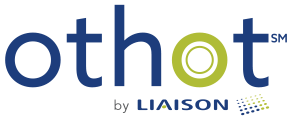Why Machine Learning for Enrollment Management

Mark Voortman
Over the last few posts, we’ve established that for the most accurate predictions for enrollment, you want a solution built with machine learning. But not all machine learning is created equal. Some solutions apply the same algorithm across all of the institutions it works with and to all of the students in that institution’s prospect pool regardless of stage in the lifecycle, e.g. prospect, applicant, or admittee.
Good data science mandates that One Size Does Not Fit All. A model and algorithm that produces razor-sharp predictions for a school that has five years of data and more than 100 squeaky-clean variables – or plans to enroll a class of 5000 freshmen – is not necessarily the best algorithm for a school with just nine variables of data going back two years, or that’s trying to enroll a class of 500.
The ideal solution should utilize automation to rapidly sift through countless combinations of model parameters, machine learning algorithms, preprocessing steps, etc. to ultimately arrive at the algorithm and model that offers the most accurate results for that specific data set.
The same principle applies to the different stages of the enrollment cycle. One algorithm and model might give very accurate predictions for names that are still in the prospect stage. However, when the prospect moves on and becomes an applicant, you have a lot more data on that student, so a different model and algorithm may be required to achieve the same level of accuracy – and ditto when those students move to the “admitted” stage. Any solution that uses the same algorithm across all stages cannot give the level of accuracy an institution should expect to see with the data science available today. That could be the difference between meeting your enrollment goal or falling short.
At Othot, we use advanced machine learning and artificial intelligence to find the best possible model for our customers. We automatically try multiple algorithms (decision trees, support vector machines, etc.) as well as different parameter settings per algorithm. We divide our customer’s process into multiple phases as part of a lifecycle. Within each phase, we select the optimal algorithm and parameter setting. We think our data science is the best, and have confirmed that by running a comparison against one of our competitors. More on that in another blog post.
Over the last few weeks, my goal has been to equip you with questions and concepts to consider as you’re evaluating predictive analytics tools. Not all solutions are built the same, and understanding what’s driving the tool will help you find a solution that best fits your needs.
If you have any questions about this series, please contact us at othotteam@othot.com.




